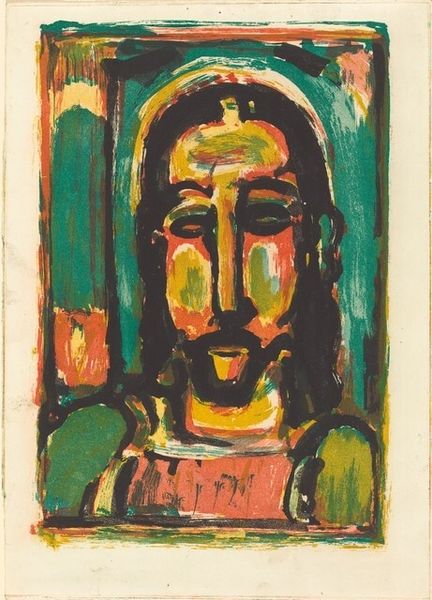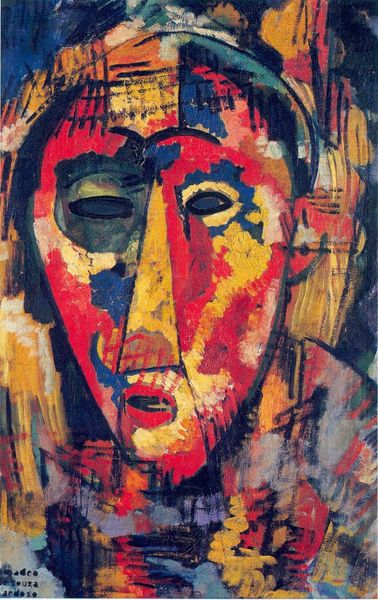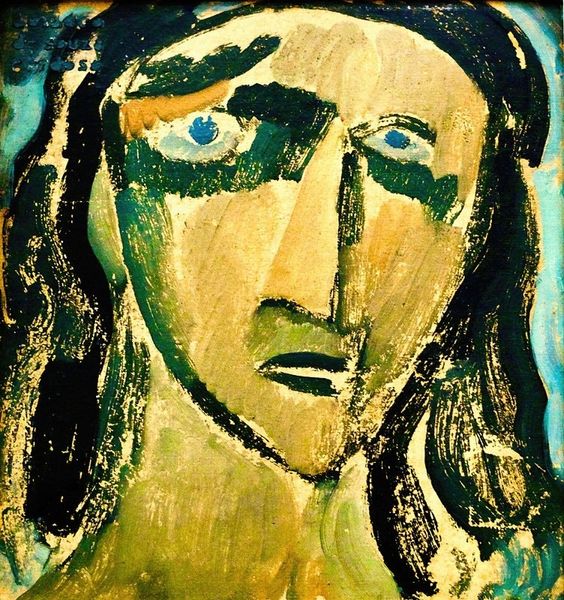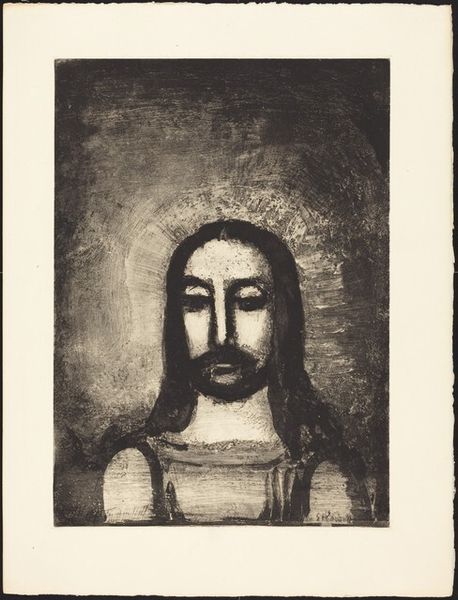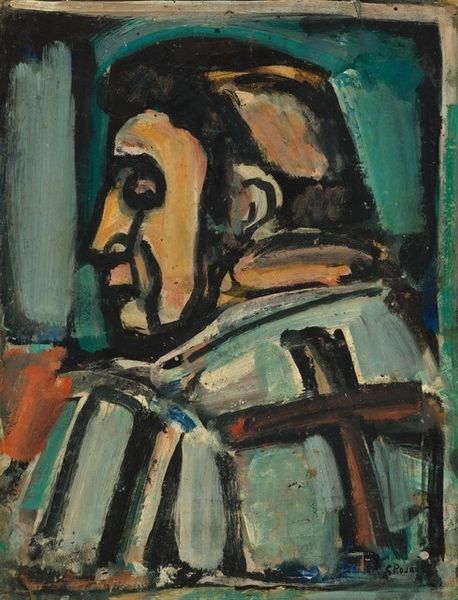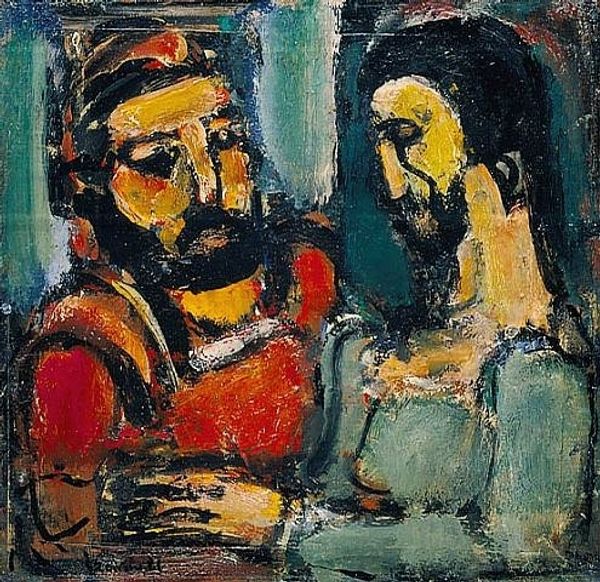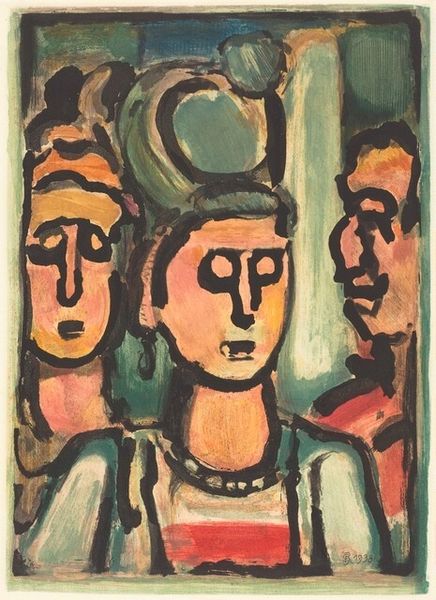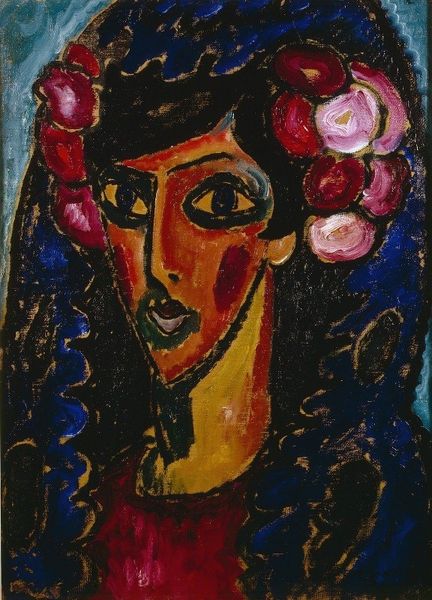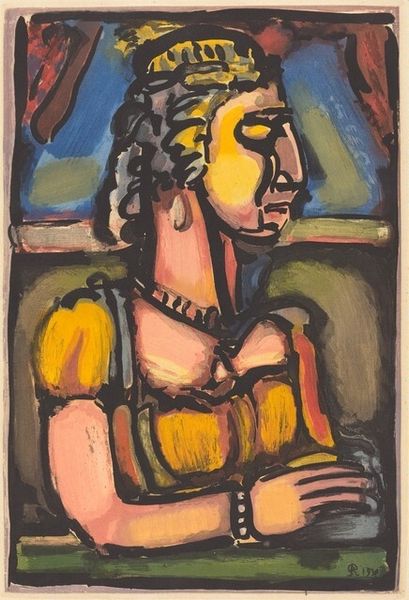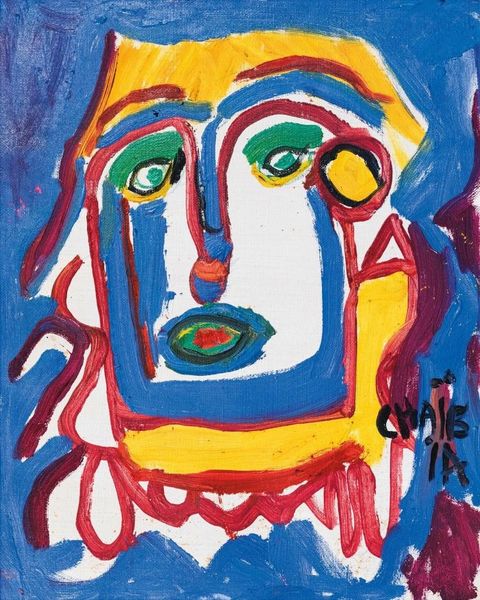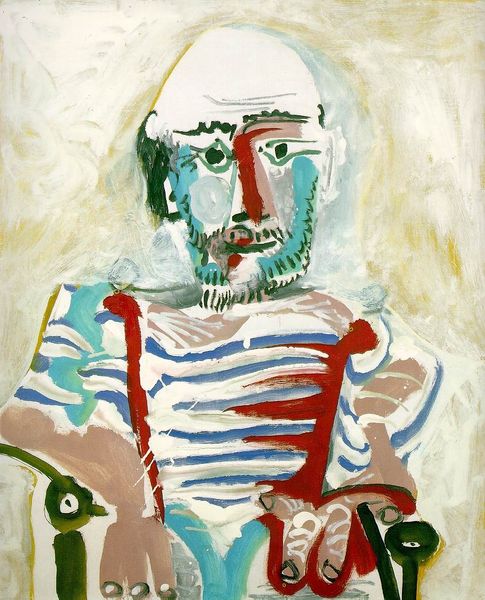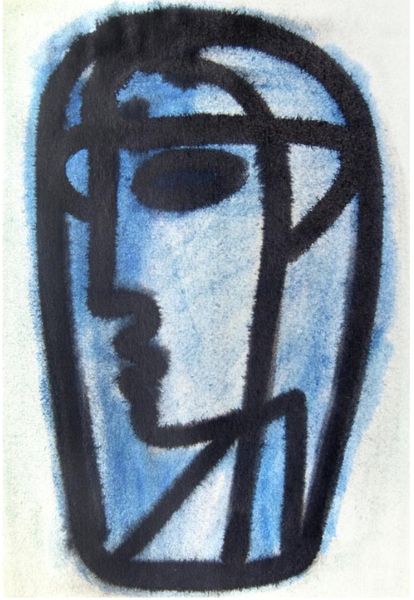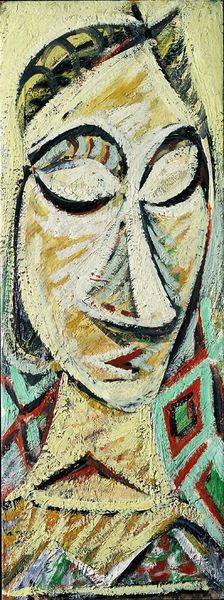
Copyright: National Gallery of Art: CC0 1.0
Editor: Here we have Georges Rouault’s "Christ de Face," created between 1936 and 1938, using oil paint and printmaking techniques. The image is striking, with strong black outlines, and quite expressive in its somewhat simplified form. How do you interpret this work, and particularly the effect of these bold lines? Curator: What stands out to me are precisely those outlines – they echo stained glass, a significant symbol in Christian art. Think about how light filters through coloured glass, transforming a space. Rouault uses those bold lines to create a similar effect, drawing attention to the spiritual weight of the subject. What emotions do you associate with stained glass imagery? Editor: A sense of reverence, certainly, and maybe a feeling of being enclosed, but also protected. Curator: Exactly. The image of Christ is not just a portrait; it becomes an icon. Rouault channels the traditional, stylized representation found in religious icons, using simplified forms and intense colors to heighten the emotional and spiritual impact. Even the eyes, though downcast, seem to hold centuries of sorrow and hope. What stories do you think this image is trying to convey through such visual language? Editor: Maybe stories of suffering and redemption, both personal and universal. Seeing it through this lens, I notice the colours are brighter than I initially perceived, perhaps suggesting hope amidst the darker tones. Curator: Indeed. It’s through those colour choices and those expressive lines that Rouault invites us to contemplate the enduring power of faith, as both a personal experience and a cultural narrative. Editor: This definitely makes me appreciate the piece even more now. Thank you for offering your insight.
Comments
No comments
Be the first to comment and join the conversation on the ultimate creative platform.
